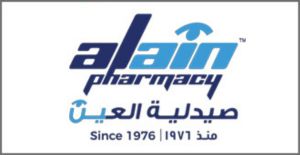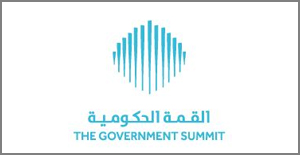iOS Application
Complete iOS app development services that focus on creating intuitive and engaging Apple applications optimized for performance and user experience.

Being an Expert App Developer in Dubai, I have worked with high-profile organizations including Etihad Towers, Hamdan Sports Complex, Yahoo, Jumeirah, and Fujairah Government. These collaborations reflect my ability to deliver advanced, reliable, and tailored mobile applications.
Business consulting consultants provide expert advice and guida the a businesses.

Our Project Complete
Our Natural Products
Clients Reviews
our Satisfied Clientd
Complete iOS app development services that focus on creating intuitive and engaging Apple applications optimized for performance and user experience.
Simple and Customised dashboards for businesses to update, analyze, and manage app content effortlessly.
Advanced Android app development using the latest frameworks and Custom solutions that align with your enterprise needs.
Integration of smart location-tracking systems within apps to optimize logistics, delivery, and service efficiency across various industries.
























At MisterSaad, I take pride in being recognized among the Top App Developers and a trusted Freelance Mobile App Developer Dubai. I have seen the development of smartphones since their inception, which gives me in-depth knowledge and an approach to all projects. My team and I are experts in end-to-end mobile development services including strategy, UI/UX design, development, integration, and quality testing. I have one of the pioneer official Apple iOS Development Certificates in Dubai, guaranteeing high-quality solutions.
With a blend of strategy, design and technical excellence, I create applications that appeal to users and lead to outcomes. I keep businesses on the leading edge of the digital world by studying user behavior and market trends. My mission is to build applications that are strong, scalable, and future-ready.
With a blend of strategy, design and technical excellence, I create applications that appeal to users and lead to outcomes. I keep businesses on the leading edge of the digital world by studying user behavior and market trends. My mission is to build applications that are strong, scalable, and future-ready.

As an App Development Leader in Dubai, I work with local and foreign brands to provide award-winning mobile solutions. My experience includes major organizations and government bodies where I delivered advanced and visually stunning mobile applications. My reputation as one of Dubai’s Best App Developers is built on innovation, performance, and success.

In today’s mobile-first environment, success begins with a strategic app. My Mobile App Development Dubai services empower your business to connect with customers, simplify operations, and generate new opportunities.
I create applications that improve user experiences, engage customers, and simplify processes. Every application represents your brand identity and delivers real performance results.
A mobile application is a vital branding tool that helps you build credibility and awareness. I design apps that not only promote visibility but also strengthen your brand identity. By following Best design and development practices, your business stays connected with users anytime, anywhere.
An effective mobile application enables the exploration of new sources of revenue by means of in-app purchase, subscription, and target promotions. Working with an Experienced App Developer in Dubai ensures your application maximizes profitability while remaining affordable in terms of Cost and maintenance.
Customers today expect personalization and convenience. With a combination of special features and smooth user experiences, your application can build a very close loyalty and recurring use. As a Qualified App Developer, I focus on delivering meaningful interactions that add value for both you and your customers. Hire a Dubai
MisterSaad offers complete mobile app development services that meet modern business needs. My approach focuses on building secure, scalable, and user-friendly applications tailored to your business goals—whether you’re a startup or an established company.
I specialize in Mobile Application Development Dubai, delivering full-stack digital products built with high-performance technologies.
Core Development Expertise
• Custom mobile application development
• Native iOS development
• Native Android development
• Cross-platform apps using Flutter
• React Native solutions
• PWA development
• Enterprise-grade web applications
Industry Solutions
• Food & grocery delivery apps
• Logistics, pickup & on-demand delivery systems
• OTT streaming platforms
• CRM & ERP enterprise systems
• Fitness & wellness apps
• Taxi booking & mobility apps
• E-commerce & marketplace solutions
• E-learning platforms
• Real estate & property apps
• Fantasy sports & betting apps
• Telemedicine applications
• FinTech & InsurTech apps
• Social networking & dating apps
I ensure strong UI/UX, strategic planning, and stable system architecture to guarantee a successful digital product.
Mobile app development costs vary depending on complexity, features, design depth, platform, and third-party integrations. Every project has a different scope, so pricing is based on requirement mapping and technical estimation.
Estimated Costs
• Simple apps: AED20,000 - AED35,000
• Advanced or enterprise apps: AED40,000 - AED60,000
• Complex systems with integrations: AED100,000 to AED350,000
Development Timelines
• MVP: 8–12 weeks
• Full product: 4–6 months
• Enterprise systems: 6–12 months
A consultation is recommended for accurate timelines, features, technical architecture, and cost estimation.
Yes. I build next-generation applications powered by AI and emerging technologies to enhance user experience, automate operations, and deliver long-term innovation.
AI Capabilities
• Machine learning
• Natural language processing
• Computer vision
• Predictive analytics
• Intelligent automation
Emerging Technologies
• Blockchain
• Augmented reality (AR)
• IoT integrations
• Edge computing
• Modern cloud infrastructure
As a Mobile App Developer in Dubai, I ensure your product is future-ready and scalable.
Yes. I provide detailed consultations to offer strategic direction before your project begins—based on years of real industry experience.
Consultation Includes
• Market & competitor analysis
• Technical feasibility review
• Product & feature planning
• Architecture recommendations
• Milestone planning
• Investment guidance
You receive a complete strategic blueprint with technologies, timelines, milestones, and investment estimates—helping you make informed decisions.
I follow strict development standards to ensure security, stability, and compliance across platforms. This includes secure coding, encryption, user-permission controls, and periodic vulnerability audits.
My quality assurance process includes:
• Performance testing
• Usability testing
• Device compatibility testing
I also provide post-launch updates, security patches, and maintenance to keep your product secure long-term.
MisterSaad is recognized as a leading Freelance Mobile App Developer in Dubai, known for innovation, technical excellence, and delivering measurable results.
I have delivered 100+ digital products to 70+ businesses across 30+ countries, including:
• AI platforms
• Blockchain systems
• Healthcare solutions
• Fintech platforms
• On-demand apps
• E-commerce systems
• Consumer apps with millions of downloads
Startups I've worked with have raised $50M+ in funding due to scalable, investor-ready products.
My approach focuses on innovation, quality, security, and long-term growth.
My design philosophy is user-centric—focused on clarity, comfort, and friction-free interactions.
This includes:
• User journey mapping
• Eliminating friction points
• Minimalist, intuitive layouts
• Responsive design
• Consistent UI patterns
I refine designs through research and testing until the experience feels polished, natural, and easy to use.
I provide full end-to-end software engineering solutions that help businesses modernize, scale, and optimize operations.
Software Services Include
• Technology consulting
• Custom software development
• Enterprise system development
• Product engineering
• System integration & migration
• CRM development
• API development
• ERP application development
Each solution includes planning, design, development, testing, and deployment—with full transparency during the process.
Yes. I provide comprehensive post-launch optimization and maintenance services.
Maintenance Includes
• Version upgrades
• Infrastructure monitoring
• Backup systems
• Bug fixing & performance tuning
• Security audits & threat prevention
• UI/UX improvements
• Feature upgrades
• Real-time performance tracking
I proactively ensure your application stays stable, secure, and optimized.
I deliver advanced, enterprise-grade AI solutions that improve automation, efficiency, and customer experience.
AI Services Include
• AI automation
• AI chatbots
• AI consulting
• Machine learning systems
• NLP solutions
• Computer vision tools
• Predictive analytics
• RPA automation
• Generative AI systems
I help businesses integrate AI into workflows smoothly, ensuring scalable and measurable results.
Leave a Reply